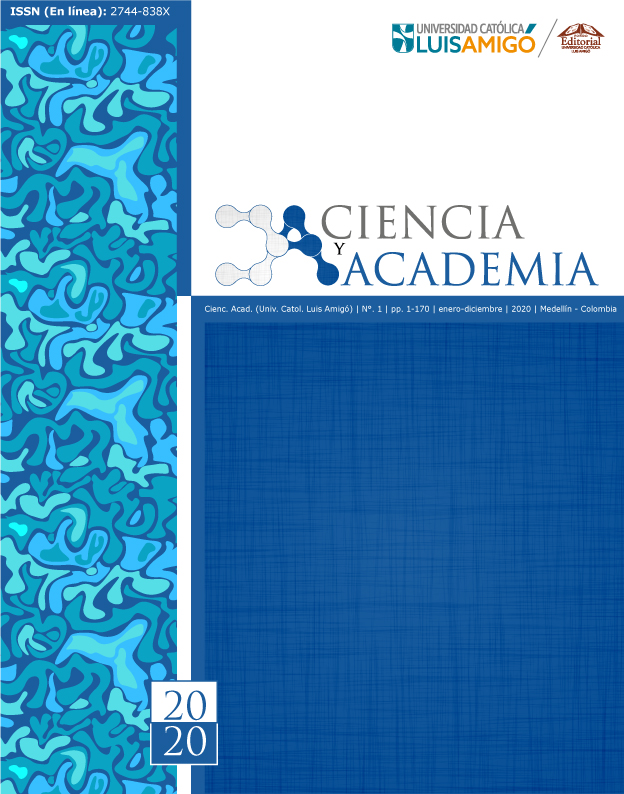Development of nanotechnological capacities in Higher Education Institutions in Antioquia-Colombia
DOI:
https://doi.org/10.21501/2744838X.3722Keywords:
Nanotechnology, Capacities, Technology, Technology management, JEL classification, O32, M19, R58.Abstract
The purpose of this article is to explore the nanotechnological capacities in the research groups of the Institutions of Higher Education (IHE) of Antioquia. The research methodology followed is the collective case study, and the analysis method used was the content analysis with the help in the initial stage of Atlas.ti. As a result of the research, an embryonic regional nanotechnological capacity is evident, and are advancing at an early stage of assimilation, where there is still no application of knowledge; the research is aimed at understanding the phenomena of matter at the nano level, not according to social or business needs, that is, an exploratory capacity, the researchers have doctoral training and the specialized teams are of low-level.The article is divided into five sections, including this introduction. The second section defines and classifies nanotechnological capabilities. The third section describes the methodological design, the fourth section presents the results, and at the end, the discussion and conclusions.
Downloads
References
Bawa, R., Bawa S. R., Maebius, S. B., Flynn, T., & Wein, C. (2005). Protecting New Ideas and Inventions in Nanomedicine with Patents. Nanomedicine, 1(2), 150-158. https://doi.org/10.1016/j.nano.2005.03.009.
Cohen, W., & Levinthal, D. (1989). Innovation and Learning: The Two Faces of R&D. The Economic Journal, 99(297), 569-596. https://doi.org/10.2307/2233763.
Cohen, W., & Levinthal, D. (1990). Absorptive Capacity: A New Perspective on Learning and Innovation. Administrative Science Quarterly, 35(1), 128-152. https://doi.org/10.2307/2393553.
Danneels, E. (2002). The Dynamics of Product Innovation and Firm Competences. Strategic Management Journal, 23(12), 1095-1121. https://doi.org/10.1002/smj.275.
De Cózar-Escalante, J. M. (2011). Nanotecnología, salud y bioética (entre la esperanza y el riesgo). Sociedad Internacional de Bioética (SIBI).
Foladori, G. (May-June, 2006). Nanotechnology in Latin America at the Crossroads. Nanotechnology Law & Business, 3(2), 205-216. http://ricaxcan.uaz.edu.mx/jspui/bitstream/20.500.11845/239/1/Foladori%2C%20Nanotechnology%20in%20Latin%20America.pdf.
Genet, C., Errabi, K., & Gauthier, C. (2012). Which Model of Technology Transfer for Nanotechnology? A Comparison with Biotech and Microelectronics. Technovation, 32(3-4), 205-215. https://doi.org/10.1016/j.technovation.2011.10.007.
Helfat, C. E., & Peteraf, M. E. (2003). The Dynamic Resource‐Based View: Capability Lifecycles. Strategic Management Journal, 24(10), 997-1010. https://doi.org/10.1002/smj.332.
Invernizzi, N., Foladori, G., Robles-Belmont, E., Záyagolau, E., Artega Figueroa, E., Bagattolli, C., Carroza, T., Chiancone, A., y Urquijo, W. (2015). Nanotecnología dirigida a necesidades sociales. Contribuciones de la investigación latinoamericana en medicina, energía y agua. Sociología y Tecnociencia, 5(2),1-30. https://revistas.uva.es/index.php/sociotecno/article/view/678/654.
Levinthal, D., & March, J. (1993). The Myopia of Learning. Strategic Management Journal, 14(2), 95-112. https://doi.org/10.1002/smj.4250141009.
Lugones, G. E., Gutti, P., y Le Clech, N. (2007). Indicadores de capacidades tecnológicas en América Latina. Estudios y Perspectivas, 89. Naciones Unidas. https://repositorio.cepal.org/bitstream/handle/11362/5014/1/S0700876_es.pdf|.
March, J. G. (1991). Exploration and Exploitation in Organizational Learning. Organization Science, 2(1), 95-112. https://doi.org/10.1287/orsc.2.1.71.
Mendoza-Uribe, G., y Rodríguez-López, J. (2007). La nanociencia y la nanotecnología: una revolución en curso. Perfiles Latinoamericanos, (29), 161-186. https://www.redalyc.org/pdf/115/11502906.pdf.
Shea, C. M. (2005). Future Management Research Directions in Nanotechnology: A Case Study. Journal of Engineering and Technology Management, 22(3), 185-200. https://doi.org/10.1016/j.jengtecman.2005.06.002.
Silva, F. (2010). Nanotecnología en Colombia, retos y oportunidades. Universidad Distrital.
Winter, S. (2000). The Satisficing Principle in Capability Learning. Strategic Management Journal, 21(10/11), 981-996. https://doi.org/10.1002/1097-0266(200010/11)21:10/11<981::AID-SMJ125>3.0.CO;2-4.
Zott, C. (2003). Dynamic Capabilities and the Emergence of Intra-Industry Differential Firm Performance: Insights from a Simulation Study. Strategic Management Journal, 24(2), 97-125. https://doi.org/10.1002/smj.288.
Published
How to Cite
Issue
Section
License
Copyright (c) 2020 Ciencia y Academia

This work is licensed under a Creative Commons Attribution-NoDerivatives 4.0 International License.
La revista y los textos individuales que en esta se divulgan están protegidos por las leyes de copyright y por los términos y condiciones de la Licencia Creative Commons Atribución-No Comercial- 4.0 Internacional. Permisos que vayan más allá de lo cubierto por esta licencia pueden encontrarse en http://www.funlam.edu.co/modules/fondoeditorial/






